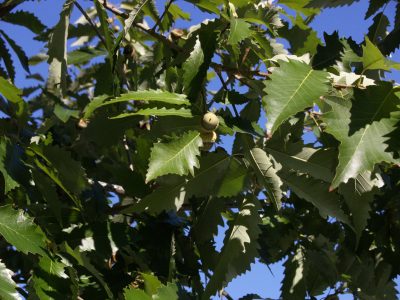Why is it bad to mulch a tree up its trunk?
This practice is widely known as “volcano-mulching,” and makes the space directly adjoining the trunk nice and attractive to insects and diseases.
Mulch helps to maintain moisture, but when over-watered, never dries out. This is especially problematic for newly planted trees, whose bark is relatively thin and easy to penetrate. And if the bark is damaged or rots away, it creates an easy pathway for invasion into the growing tissue.
This could slow the tree’s growth, or even kill it. Overly wet mulch also encourages roots to grow up into the moist area, rather than down, where they belong. In extreme cases, this can also encourage the roots to girdle, or grow in a circle, eventually choking the tree.
And in keeping with our tree-based theme this week, let’s talk about mulching. Since we see trees mulched all over town, we know it’s a good practice. But since it’s often done incorrectly, we may have learned the wrong way to do it. Mulch should be spread over the entire root zone of the tree, but not all the way up against the trunk.
I’m going to steal a pun from one of my colleagues: Problems ERUPT when trees are volcano mulched.Yes, yes, I know that was nerdy.








 Elizabeth McGreevy
Elizabeth McGreevy April Rose
April Rose Daphne Richards
Daphne Richards
 Trisha Shirey
Trisha Shirey